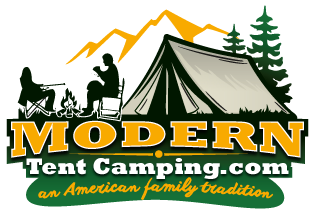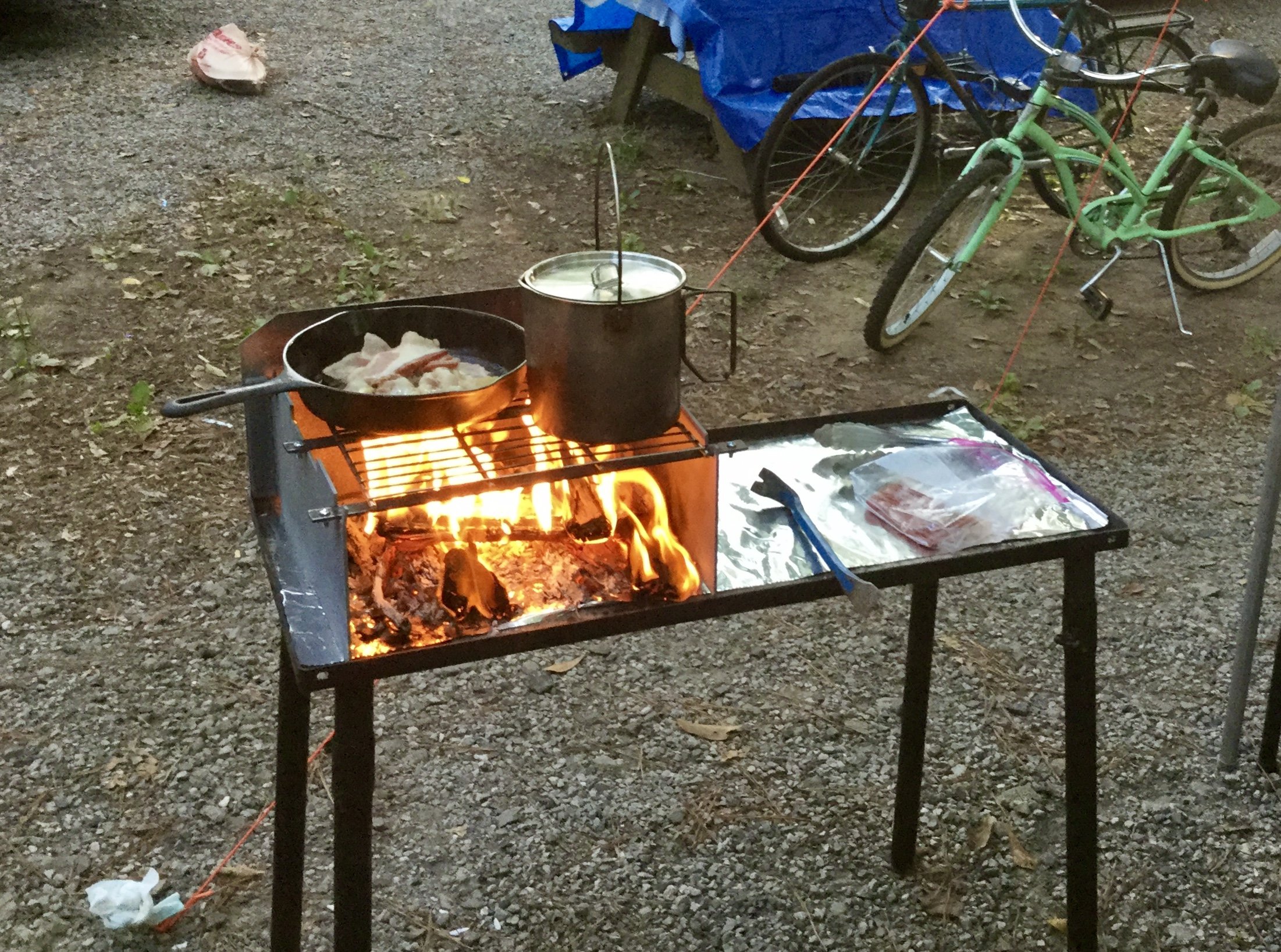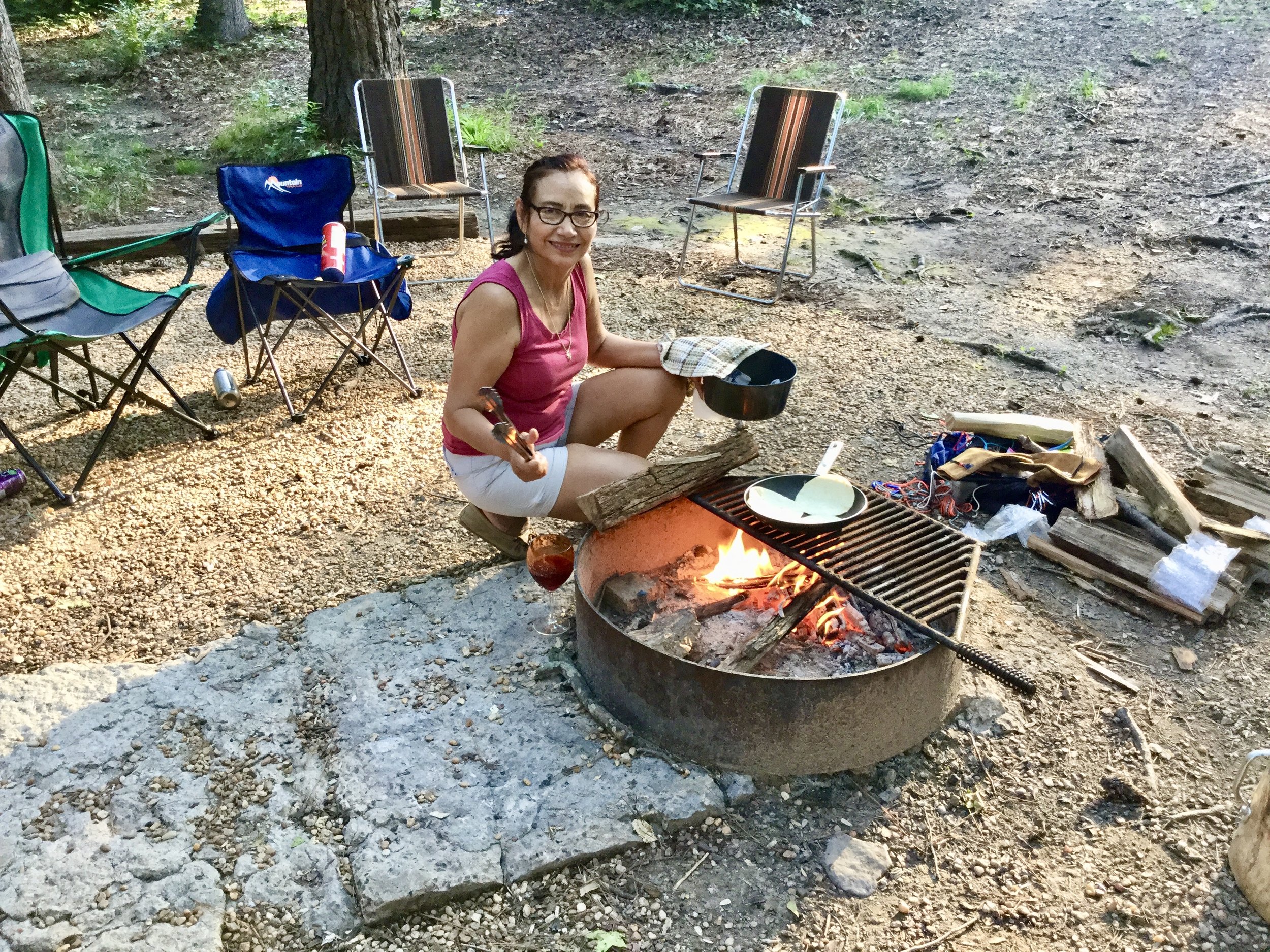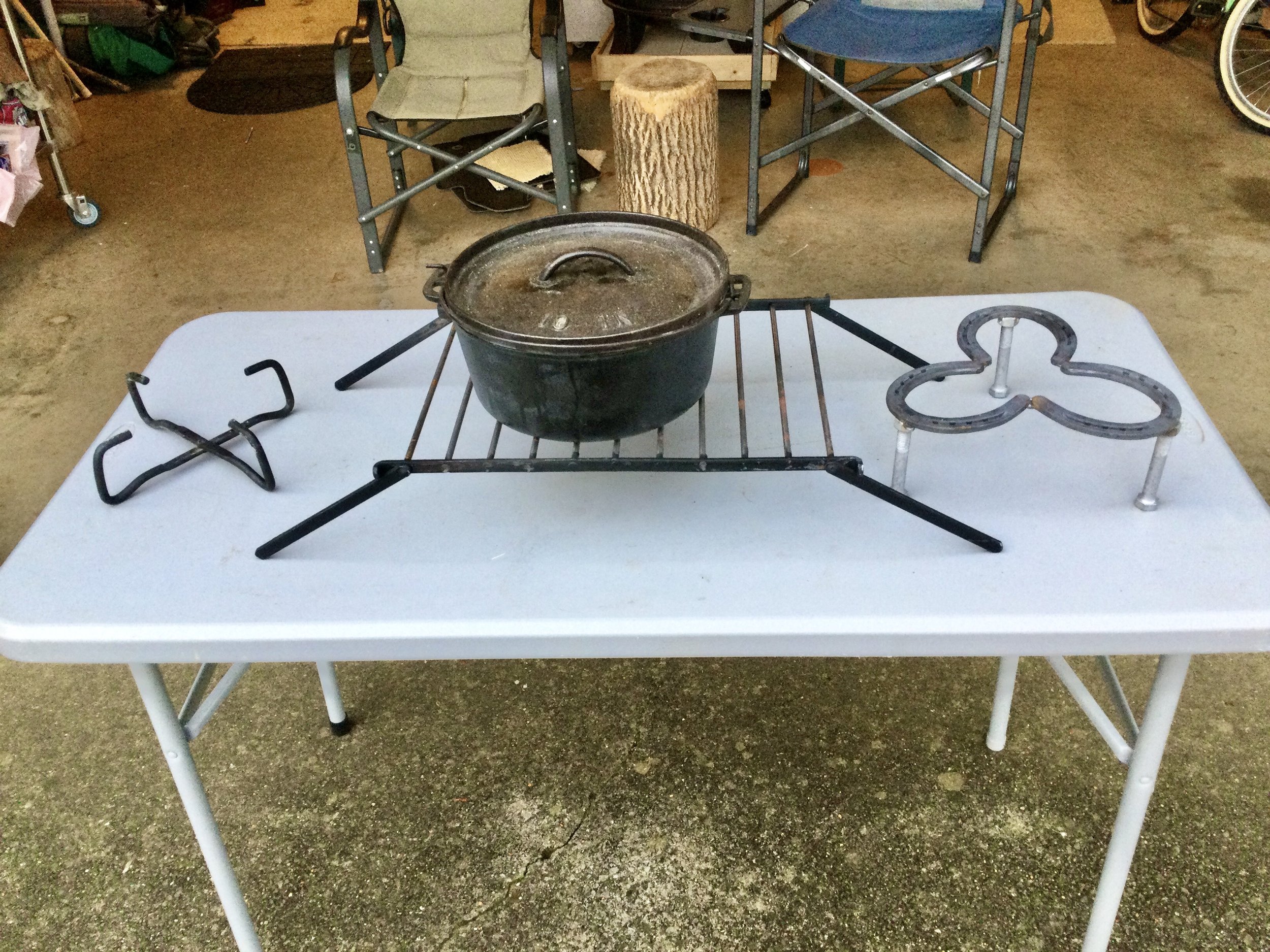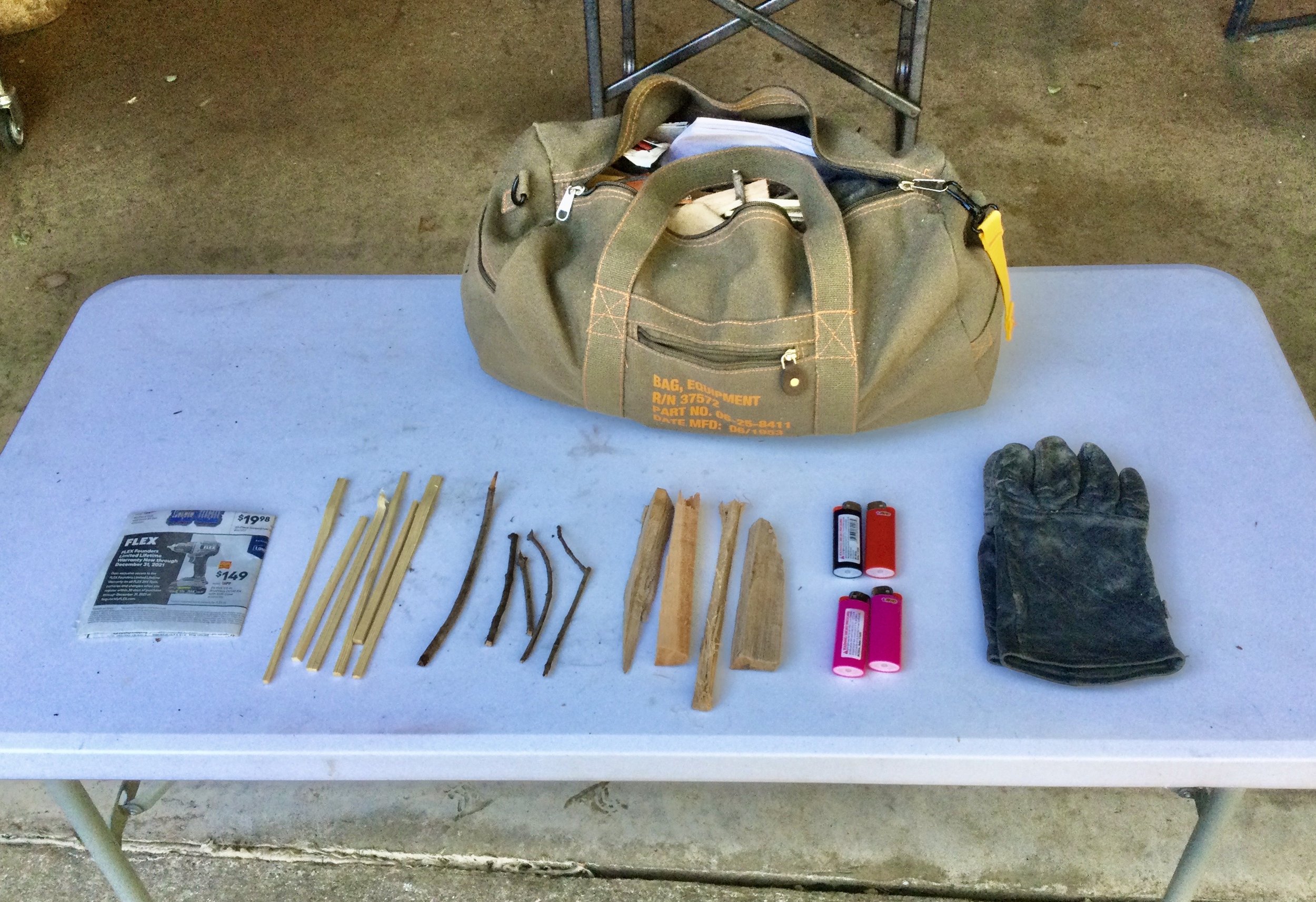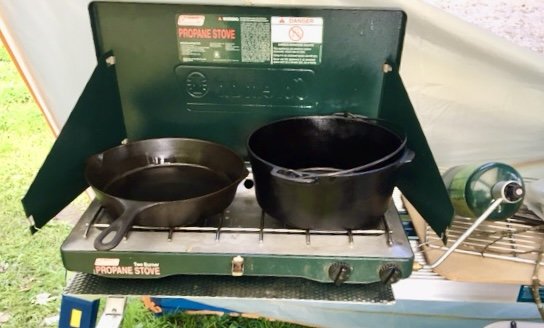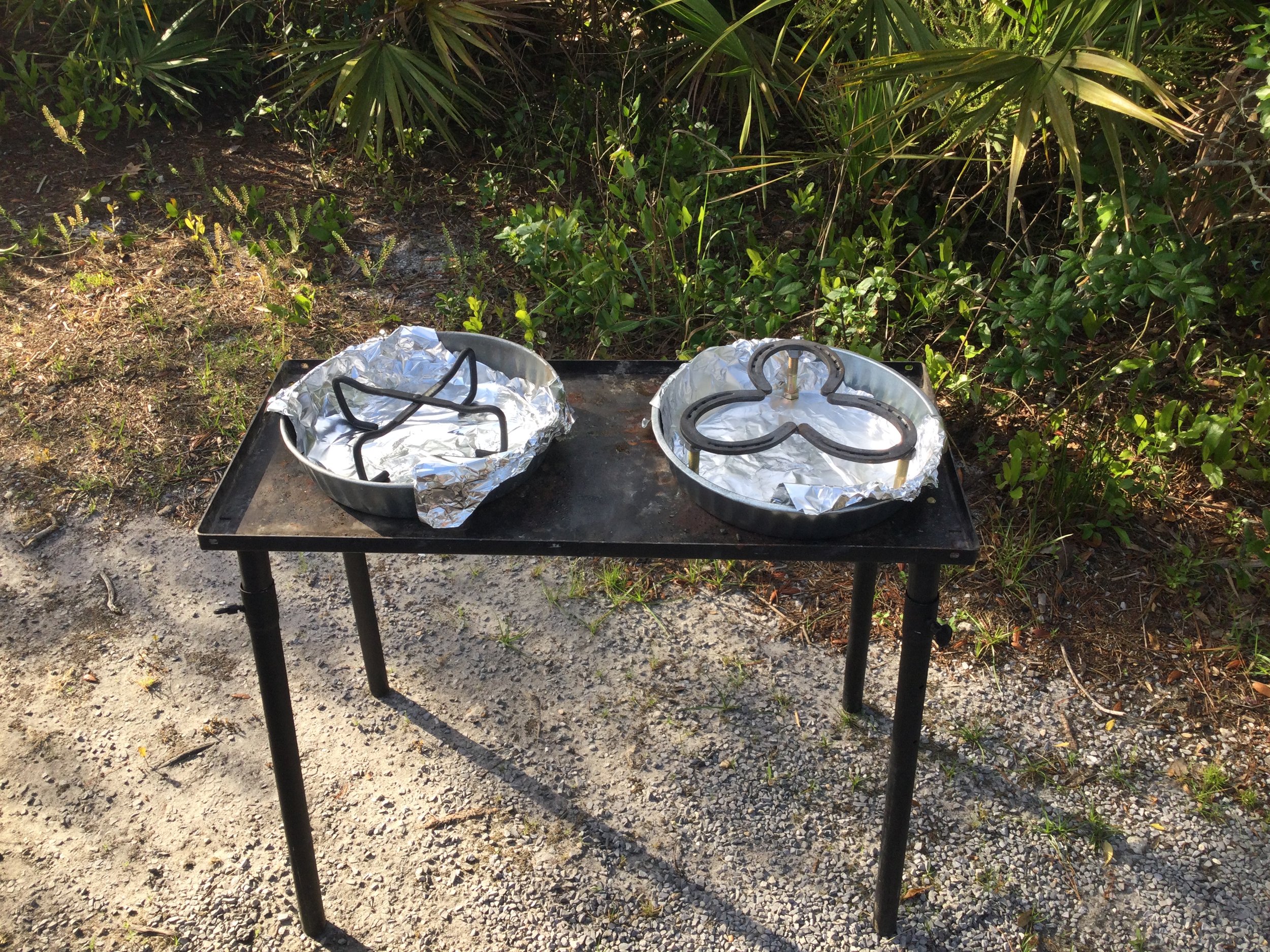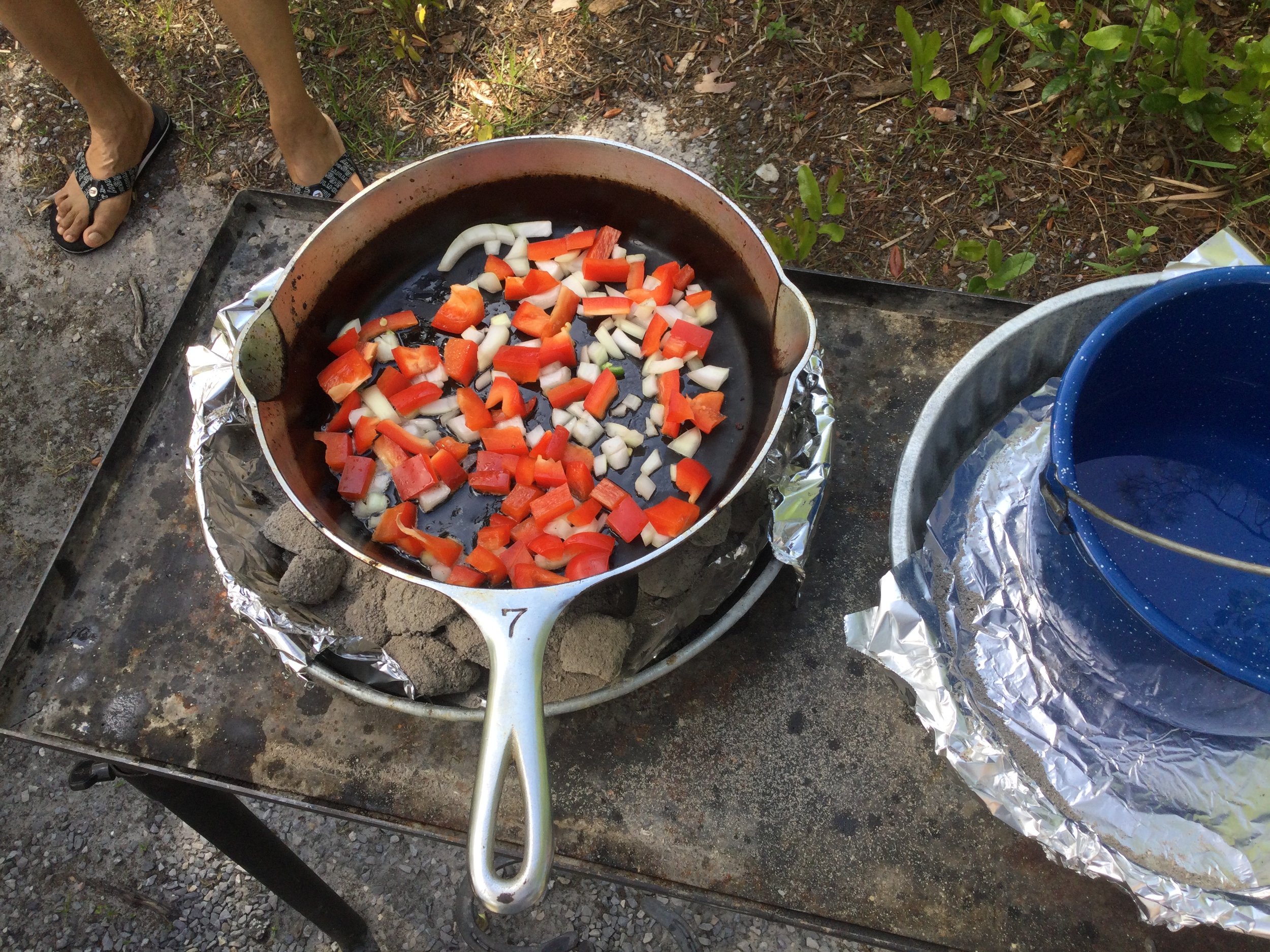Decide How You Will Cook Your Food
When planning a camping trip, you must decide how you will cook your food and then pack the equipment and fuel you will need. In the past, campers always cooked their meals over wood fires and it was generally believed that a camp without a campfire was no camp at all. Today, campers have other cooking options but they still should cook at least one meal over a wood fire.
Wood Fire
To cook a meal over a campfire, campers must pack fire-starting materials at home and then find good firewood after arriving at their camping destination. Suggestions for finding good firewood are presented on the CAMPFIRE COOKING page of this website.
The best way to cook food over a wood fire is on a pedestal grill. Pedestal grills are well-suited for wood fire cooking because they allow you to stand up while cooking and require little fuel. Before starting a fire, remove ashes from previous fires with your camp trowel. If you frequently camp in campgrounds that do not have pedestal grills, pack trivets or gridirons - or - make a small folding wood stove - like my Woody stove - to include in your camp kitchen gear.
If a pedestal grill is not available in your campsite, you can cook your meals on the cooking grate of a camp fire ring. Ideally, the grate height should be adjustable above the fire. But, if your fire ring doesn’t have a cooking grate, you can easily cook your meals over a campfire with a few cooking accessories. In particular, you will need a folding cooking grate, gridiron, or a couple of trivets. Typically, you should build your fire in a larger part of the fire ring and move hot coals under the grate as needed to adjust the heat.
If you don’t have a cooking grate or pots, you can still cook a lot of foods by wrapping them in aluminum foil and placing them in the coals of your campfire.
To quickly start a wood fire, prepare a fire-starter bag at home before departing. The bag should contain several butane lighters, some dry tinder such as newspaper sheets, some small kindling such as small twigs, and some large kindling such as small sticks. You should also pack a camp axe to split firewood. After arriving at your campsite, find some good seasoned firewood and split a few pieces into smaller stove wood.
For more information about campfire cooking, see the CAMPFIRE COOKING page of this website and watch videos on my YouTube channel, Modern Tent Camping. To see my methods for quickly and safely splitting firewood, check out my YouTube videos.
A pedestal grill is a great place to cook with a wood fire.
A pedestal grill allows you to stand while cooking and cook two or three things at the same time.
When a pedestal grill is unavailable, we use our Woody Folding Camp Stove.
You can cook many meals over a campfire.
If your campsite fire ring does not have a good cooking grate, pack a gridiron or a couple of trivets.
Before departing on a trip, pack a fire starter bag with leather gloves, butane lighters, dry paper tinder, small kindling, and large kindling.
Propane Stove
If you don’t want to fool with a wood fire, a propane stove is much more efficient. Propane stoves are very simple to use and their fuel cylinders can be found in almost any department or convenience store. Just screw the fuel cylinder onto the stove and turn on the burners. When the cylinder runs out of fuel, just screw it off and screw on a fresh cylinder. The primary limitation of these stoves is the relatively large amount of packing space they and their fuel require. A second limitation is the inconvenience of having to drive to the store to buy replacement fuel cylinders. Several companies make these stoves but the best known is Coleman.
Charcoal
If you are unable to find good firewood, or don’t want to spend time looking for it, you can cook almost any food with charcoal. We use small, 1 gallon galvanized steel pans found in farm supply stores and small 3-inch trivets. To increase the heat, just place more hot briquets in the pan. When cooking foods for more than 15 minutes, start a second batch of charcoal soon after you start cooking to assure that you will have hot coals when your first ones burn out.
This Coleman 2-burner propane stove is economically priced and its small fuel cylinders are easy to find.
Set up your camp stove on a table in your kitchen shelter.
Small steel pans with trivets allow you to easily cook with charcoal
Sauteing Vegetables with Charcoal
White Gas Stove
Before propane stoves became popular, gas fueled stoves were popular with camping families. But these stoves had many limitations. Typically campers had to pack a large can of white gas and a small funnel to fill the stove's gas tank. When the tank ran out of fuel, the camper had to wait until the stove cooled to the touch, find the funnel, pour the fuel through the funnel into the tank, pump air into the tank, and relight the burner. Frequently, these operations resulted in small fuel spills on your hands, clothing, and equipment. And you smelled like gasoline until you could take a bath and change clothes. After the trip, you had to drain the fuel out of the tank and burn it out of the fuel jets. And you had to replace the fuel generator every 3 to 5 years. And this is the reason why propane stoves became more popular.
Butane Stove
One burner butane stoves such as the Coleman Camp Bistro have emerged as another stove option for camping families. These stoves require less packing space than the two burner propane stoves and offer a neater way to incorporate the fuel bottle into the stove. But they do not cook well in cool weather and, with only one burner, you can’t cook a lot of food.
Backpacking Stoves
Several small, lightweight stoves have been developed for backpackers but, in general, these stoves are poorly suited for family camp cooking. These stoves include small wood burning stoves such as the Firebox, Isobutane-Propane (ISOPRO) canister stoves such as the MSR Pocket Rocket, solid fuel stoves such as the Esbit Pocket Stove, alcohol stoves such as the Trangia Spirit Stove, and small gas stoves such as the MSR Whisperlite. But, these stoves are poorly suited for family camping because they are small and cannot support more than one pot. Furthermore, they cannot support heavy cast iron pots filled with stew and they have low heat output.
